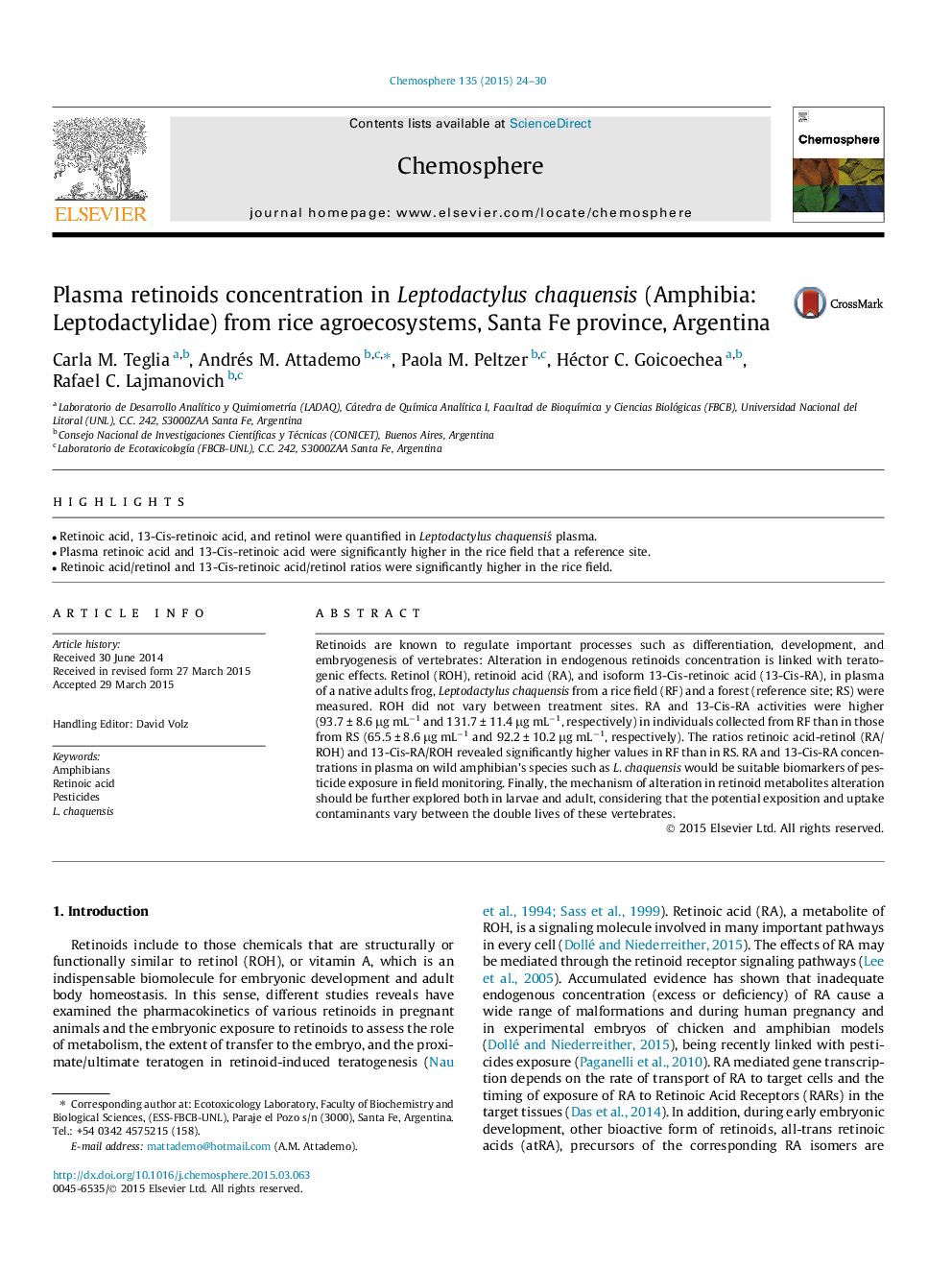| Article ID | Journal | Published Year | Pages | File Type |
|---|---|---|---|---|
| 6307792 | Chemosphere | 2015 | 7 Pages |
Abstract
Retinoids are known to regulate important processes such as differentiation, development, and embryogenesis of vertebrates: Alteration in endogenous retinoids concentration is linked with teratogenic effects. Retinol (ROH), retinoid acid (RA), and isoform 13-Cis-retinoic acid (13-Cis-RA), in plasma of a native adults frog, Leptodactylus chaquensis from a rice field (RF) and a forest (reference site; RS) were measured. ROH did not vary between treatment sites. RA and 13-Cis-RA activities were higher (93.7 ± 8.6 μg mLâ1 and 131.7 ± 11.4 μg mLâ1, respectively) in individuals collected from RF than in those from RS (65.5 ± 8.6 μg mLâ1 and 92.2 ± 10.2 μg mLâ1, respectively). The ratios retinoic acid-retinol (RA/ROH) and 13-Cis-RA/ROH revealed significantly higher values in RF than in RS. RA and 13-Cis-RA concentrations in plasma on wild amphibian's species such as L. chaquensis would be suitable biomarkers of pesticide exposure in field monitoring. Finally, the mechanism of alteration in retinoid metabolites alteration should be further explored both in larvae and adult, considering that the potential exposition and uptake contaminants vary between the double lives of these vertebrates.
Keywords
Related Topics
Life Sciences
Environmental Science
Environmental Chemistry
Authors
Carla M. Teglia, Andrés M. Attademo, Paola M. Peltzer, Héctor C. Goicoechea, Rafael C. Lajmanovich,
